Financial
Ethereum surpassed Visa in 2021 concerning the sums traded.
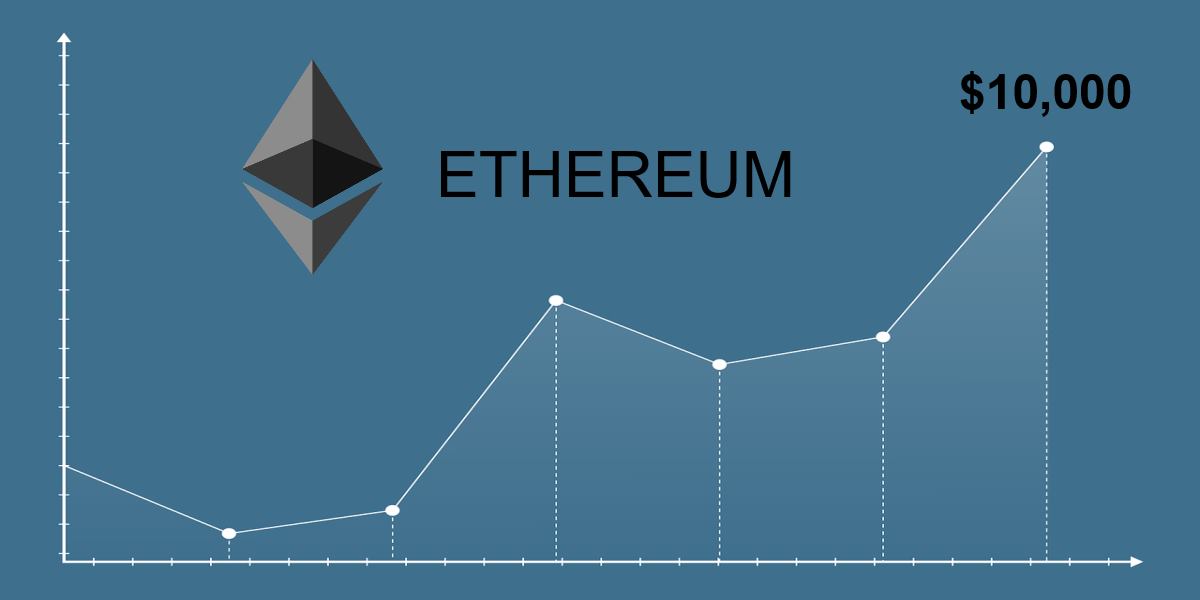
Ethereum has a high usage rate and a high fee structure, and the implementation of EIP-1559 has resolved some issues. In 2021 Ethereum Surpassed Visa concerning the sums traded on the network.
A detailed analysis of Ethereum in 2021 by Josh Stark points out that the second-largest cryptocurrency in the world has overtaken Visa in terms of value transacted.
Last year alone, the Ethereum network handled the equivalent of $11.6 trillion in transactions.
In addition to this information, the article also provides data on the total fees paid on different blockchains, including Bitcoin.
It also analyzes the arrival of second-layer solutions and the arrival of different players in the sector.
Finally, it is also possible to find detailed information about the ratio between emission and burning of ETH after the introduction of EIP-1559.
Ethereum surpassed Visa
The sums traded by Bitcoin and Ethereum are perhaps the most unexpected facts uncovered in this research.
While Visa transacted a total of 10.4 trillion dollars in 2021, Bitcoin moved US$ 4.6 trillion, passing PayPal.
Ethereum managed to double the volume of BTC and surpass Visa after closing the year with a volume of transactions equivalent to 11.6 trillion dollars.

Although it seems that Bitcoin is losing this fight, it is worth remembering that most transactions on Ethereum involve tokens, fungible or not. That is, both have their merits here.
High Usage and High Fees on Ethereum Network
As most blockchains work as an auction system, where transactions with higher fees are accepted first, it is no surprise to find expensive fees when networks are overloaded.
With the explosion of DeFi, NFT, play-to-earn gaming sectors, scalability has been Ethereum’s weak point ever since. In other words, he could be a lot bigger if his rates were cheaper.
The chart below compares some payment solutions’ total fees paid in 2021.

While a 10-fold difference between ETH and BTC draws attention, Visa’s $24 billion is the focus. After all, this profit belongs to the company. In cryptocurrencies, this profit goes to the miners.
Second layer solutions
Because of the scalability mentioned above, the latter half of 2021 was defined by second-tier solutions on Ethereum. Escaping high fees is the main reason.

The article highlights that Ethereum validated around 1.2 million transactions per day and that the arrival of these second-tier solutions is managing to increase this number, which is currently at its limit.
The Growth in use cases of Cryptocurrency
Another important observation from Stark’s Ethereum 2021 retrospective is the expansion of cryptocurrency use cases, mainly linked to Ethereum itself.
While until the year 2020, the vast majority of people who lived off cryptocurrencies were investors, developers, and companies. The expansion of non-fungible tokens (NFTs) attracted other professionals to this universe.
For example, artists selling their artwork on NFT are often used by athletes such as Stephen Curry, which also has strong ties to Bitcoin and cryptocurrencies. Currently, he is a partner in one of the largest exchanges in the world and collects NFTs.

Stark compares revenue between Ethereum and other services used by artists such as Spotify and YouTube Music in the chart above. Pointing out the potential of blockchain, still little explored.
The Ethereum burns with the EIP-1559.
Finally, the report highlights Ethereum’s economic shift in August through EIP-1559. With it, part of the transaction fees began to be burned, reducing the total supply of ETH.

With a reward of 2 ETH per block, generated every ~15 seconds, Ethereum would have inflation of around 11,520 ethers per day. In November, the network burned its one-millionth ETH.
Despite this, the amount was lowered once the burn was introduced.
Highlighting the end of October, when Ethereum became a deflationary asset for eight consecutive days, that is, the number of ethers decreased in this period.
Ultimately, this shows that ignoring cryptocurrencies is a mistake.
Like the director of Microsoft, the most visionary already admit that Ethereum will be the new application store.
On the other hand, Bitcoin gains more space as a store of value with each passing day, and today both are dominant in their areas.
Financial
PayPal’s Bold Move: A New Bank for Small Business Loans Could Transform Financing
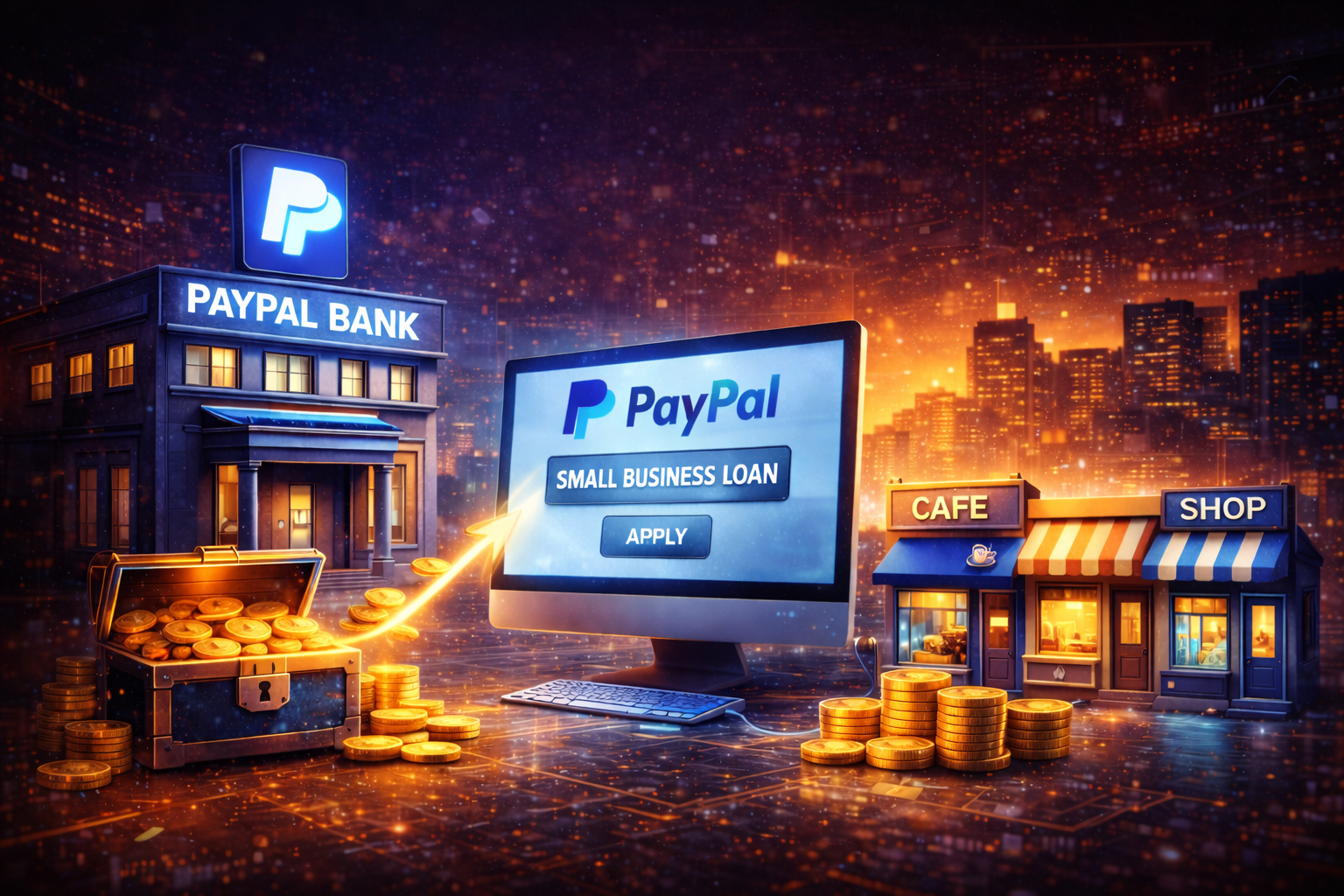
PayPal is taking a major step toward reshaping the future of small business finance. The company has officially applied to establish a dedicated U.S. bank designed specifically to originate and manage PayPal small business loans. This strategic shift signals a powerful evolution for the fintech giant, putting it in direct competition with traditional lenders while offering entrepreneurs a more modern, data-driven alternative.
What PayPal’s New Bank Means for Small Business Owners
PayPal has submitted its application to the U.S. Office of the Comptroller of the Currency (OCC). If approved, the institution will be focused exclusively on providing small business loans across the United States.
This would allow PayPal to originate, underwrite, and service loans directly—something it currently must do through bank partners. With complete control over the lending infrastructure, PayPal could offer faster approvals, more specialized loan products, and deeper integration with the existing PayPal business ecosystem.
For entrepreneurs, this means the potential to:
- Apply for financing directly inside their PayPal dashboard
- Access loans based on real PayPal sales data
- Receive faster decisions and more flexible credit options
For many small businesses that struggle to qualify for traditional bank loans, this represents a meaningful new source of capital.
Why PayPal Is Making This Strategic Shift Now
The timing of this move aligns with a major gap in the lending market. Traditional banks often view small business lending as risky and resource-intensive, leaving many entrepreneurs underserved.
PayPal, however, has access to years of real-time merchant transaction data, allowing it to evaluate creditworthiness with greater precision. By leveraging this advantage, PayPal aims to offer:
- Streamlined loan access with minimal paperwork
- Data-powered risk analysis that goes beyond credit scores
- A unified financial hub for payments, lending, and cash management
This evolution positions PayPal not just as a payments provider, but as a comprehensive business banking partner.
Challenges PayPal Must Navigate
Becoming a regulated bank introduces significant oversight and operational demands. PayPal will need to comply with strict capital requirements and supervisory expectations while preserving its fast-moving fintech culture.
Additional questions include whether:
- PayPal loans will be meaningfully better than existing lending options
- Merchants will trust PayPal as a true banking institution
- The company can balance innovation with regulatory obligations
Competition is also heating up. Square (Block) already operates a bank, and other fintechs are rapidly entering embedded finance.
A Glimpse into the Future of Business Banking
PayPal’s application marks a pivotal milestone for the future of embedded finance. It hints at a world where businesses manage payments, loans, and financial operations from the same digital platform they already use daily.
If approved, the PayPal small business bank could:
- Offer faster and more inclusive access to capital
- Redefine underwriting using real transaction data
- Push more fintechs to pursue similar regulatory pathways
This move could ultimately lead to a more agile, transparent, and digital-first financial system for entrepreneurs.
Frequently Asked Questions (FAQs)
Q: Has PayPal’s bank been approved yet?
A: No. The application has been filed with the OCC, but regulatory review may take several months or longer.
Q: Will this change PayPal’s existing loan products?
A: Potentially. The new bank could expand or absorb programs like PayPal Working Capital, offering new lending tools with more control.
Q: Is this bank for personal loans?
A: No. The bank is designed exclusively for U.S. small business lending.
Q: How is this different from traditional bank loans?
A: Expect faster decisions, online applications, and credit assessments based on PayPal sales data rather than just credit scores.
Q: Would funds held in this new bank be insured?
A: If approved, deposits would likely be FDIC-insured up to standard limits.
Q: What does this mean for competitors like Square/Block?
A: It increases pressure in the embedded finance space. PayPal is now following a similar path to Square’s bank charter, intensifying competition.
Crypto Currency
Spot Bitcoin ETFs Hit Sharp Reversal as $351.7M Exits the Market — Fidelity Leads Outflows

Major U.S. spot Bitcoin ETFs see a rapid sentiment shift as investors pull capital during heightened volatility.
The U.S. spot Bitcoin ETF market experienced a decisive pivot on December 15, marking one of its most significant outflow days in recent weeks. After a brief period of positive net inflows, regulated Bitcoin investment products saw a sudden $351.7 million exit, underscoring the speed at which sentiment can shift within the cryptocurrency investment landscape.
Massive Outflows Hit Spot Bitcoin ETFs
The downturn was led prominently by the Fidelity Wise Origin Bitcoin Fund (FBTC), which recorded a substantial $230 million in single-day outflows. The movement was far from isolated — several major funds saw similar redemptions, indicating broad market caution rather than a fund-specific event.
Breakdown of December 15 Outflows
- Fidelity FBTC: –$230.0M
- Bitwise BITB: –$44.32M
- Ark Invest ARKB: –$34.49M
- Grayscale GBTC: –$27.51M
- VanEck HODL: –$21.25M
While most funds faced redemptions, one outlier stood firm: BlackRock’s IBIT posted zero flows, indicating a neutral stance among investors during the selloff. Valkyrie’s BRRR was the only product to attract new capital, gaining $6 million in net inflows.
Why ETF Flows Matter for Bitcoin
Spot Bitcoin ETFs offer an essential real-time indicator of institutional and retail demand. Unlike futures-based alternatives, these products require the direct purchase or sale of Bitcoin to match fund issuance and redemptions, making them a strong proxy for capital entering or exiting the asset.
A net outflow event of this size:
- Signals increased short-term risk aversion
- Potentially applies downward pressure on spot Bitcoin markets
- Reflects shifting macro sentiment or profit-taking behavior
- Highlights diverging investor strategies across ETF issuers
Market Sentiment and Forward Outlook
The reversal serves as a reminder that Bitcoin ETF flows can be highly cyclical, influenced by macroeconomic news, liquidity conditions, and investor positioning. While outflows are not unusual, their magnitude can reshape near-term market dynamics.
Fund behavior also revealed key differences:
- Some issuers faced heavy redemptions
- Others maintained stable positioning
- A few saw continued niche inflow interest
This divergence underscores the importance of evaluating ETF flow patterns alongside Bitcoin price movements for a fuller market perspective.
Conclusion: A Developing Market Still Finding Its Rhythm
The $351.7 million withdrawal highlights the evolving nature of spot Bitcoin ETFs as they integrate deeper into traditional markets. Though these products provide regulated and simplified exposure to Bitcoin, they remain sensitive to broader shifts in investor sentiment.
As Bitcoin matures within financial markets, sharp inflows and outflows will likely continue to shape price behavior and institutional engagement. For investors, understanding ETF flow dynamics remains a vital tool in navigating the rapidly changing digital asset ecosystem.
Crypto Currency
Cathie Wood Reveals Her Top Crypto Picks for the Next 3–5 Years: BTC, ETH, and SOL
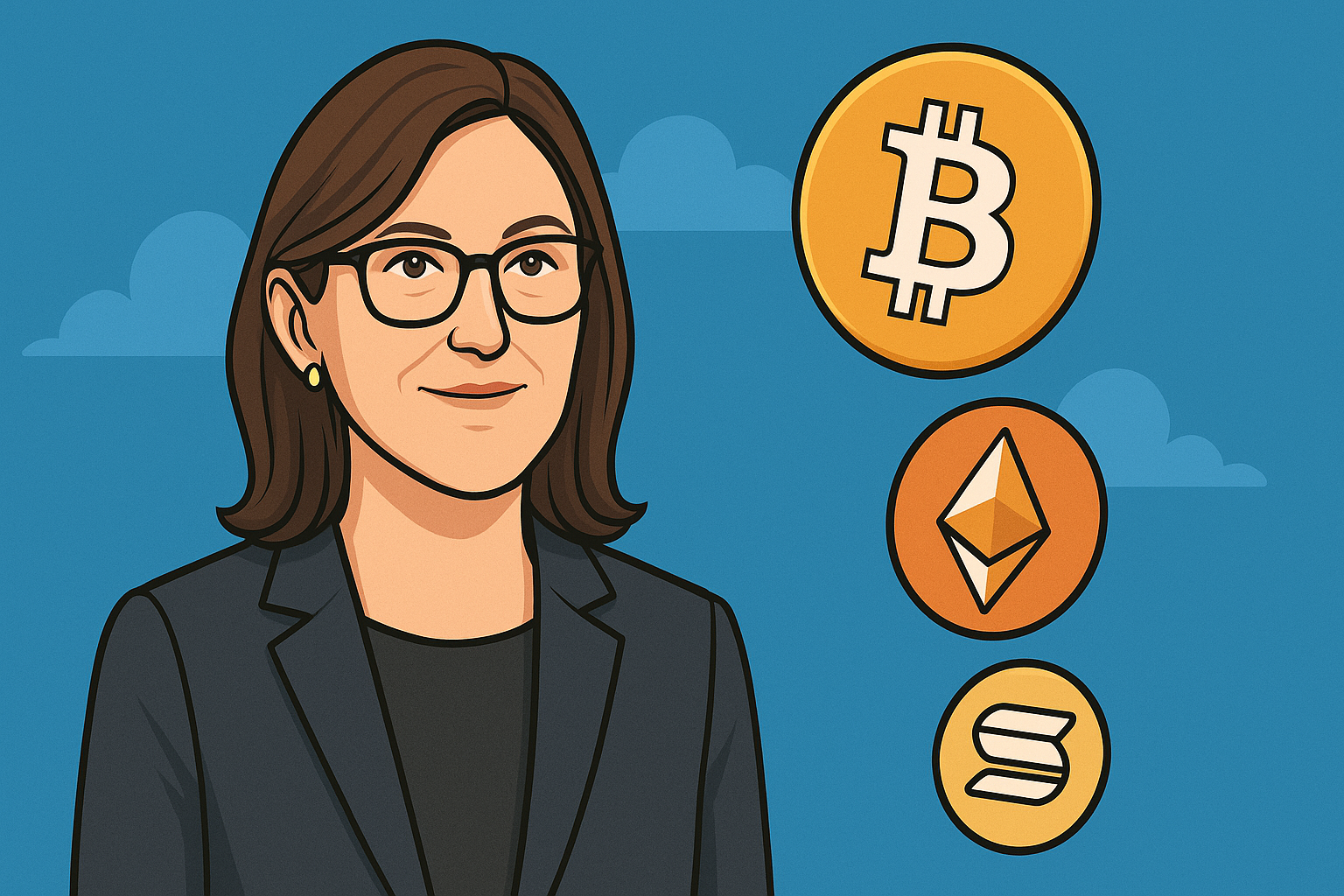
Cathie Wood, CEO of Ark Invest, is known for making bold predictions—and this time, she’s zeroing in on the crypto networks she believes will define the next market cycle. According to Wood, institutional capital has permanently transformed the digital-asset landscape. Market volatility already behaves differently than in previous cycles, and three networks stand out as long-term winners: Bitcoin, Ethereum, and Solana. Each plays a uniquely important role in the future of crypto investing.
Why Bitcoin, Ethereum, and Solana Lead the List
1. Bitcoin (BTC): The Institutional Base Layer
Bitcoin remains Wood’s top pick, driven largely by liquidity. Large institutions require deep, stable markets before allocating serious capital—and Bitcoin still offers the strongest entry point. As the first and largest crypto asset, Bitcoin sets the tone for the entire industry.
Its fundamentals remain powerful. The most recent halving on April 20, 2024, reduced mining rewards to 3.125 BTC per block, slowing supply growth. Historically, each halving has triggered multi-year appreciation cycles. With issuance now lower than ever, long-term structural demand continues building.
2. Ethereum (ETH): The Institutional Innovation Layer
Ethereum takes second place thanks to its growing role in institutional infrastructure. Enterprises, banks, and funds already build applications on Ethereum’s base layer, while Layer-2 networks offer scalable throughput without compromising security.
Ethereum may seem less flashy than newer chains, but for professional capital, reliability outweighs hype. Its ecosystem supports stable, predictable development—an attractive trait for institutional portfolios.
3. Solana (SOL): The Consumer Adoption Engine
Solana ranks third as the most user-friendly major network. Its speed, low fees, and simple architecture allow developers to create games, social apps, and payment tools without navigating complex layers.
This consumer-first experience is driving adoption at a rapid pace. Users interact with Solana apps the way they interact with traditional web platforms—making it an ideal network for mainstream onboarding.
How Institutions Are Redefining Crypto Cycles
Wood argues that the classic four-year Bitcoin boom-and-bust cycle is fading. Institutional involvement is replacing speculative trading behavior. Long-term holders now dominate the supply, reducing volatility and dampening extreme price swings.
Bitcoin increasingly behaves like a macro-sensitive risk asset—reacting to economic growth, stock-market trends, and global liquidity conditions. This signals maturity, not weakness.
Ethereum and Solana show similar patterns. Valuations are now more closely tied to broader market forces rather than retail-driven hype. Crypto is effectively becoming part of global portfolio construction.
A Clear Roadmap for the Next 3–5 Years
Cathie Wood’s rankings outline a disciplined new structure for crypto investing:
- Bitcoin offers liquidity and macro-level durability.
- Ethereum delivers secure, institutional-grade innovation.
- Solana powers mainstream consumer adoption.
Together, these networks form a stronger foundation for a maturing digital-asset ecosystem—one defined less by wild speculation and more by long-term utility, integration, and professional capital.
-

 Crypto3 years ago
Crypto3 years agoCardalonia Aiming To Become The Biggest Metaverse Project On Cardano
-
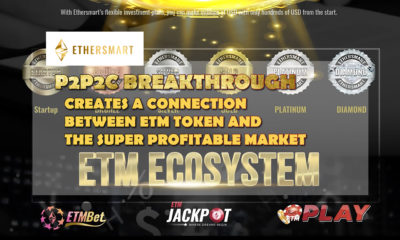
 Press Release5 years ago
Press Release5 years agoP2P2C BREAKTHROUGH CREATES A CONNECTION BETWEEN ETM TOKEN AND THE SUPER PROFITABLE MARKET
-
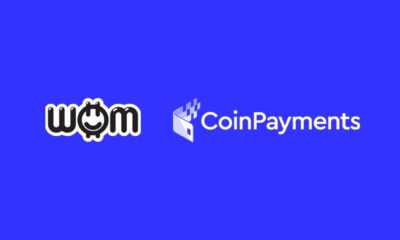
 Blockchain5 years ago
Blockchain5 years agoWOM Protocol partners with CoinPayments, the world’s largest cryptocurrency payments processor
-

 Press Release5 years ago
Press Release5 years agoETHERSMART DEVELOPER’S VISION MADE FINTECH COMPANY BECOME DUBAI’S TOP DIGITAL BANK
-
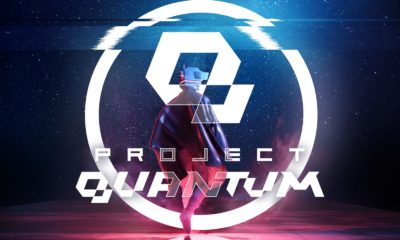
 Press Release5 years ago
Press Release5 years agoProject Quantum – Decentralised AAA Gaming
-

 Blockchain5 years ago
Blockchain5 years agoWOM Protocol Recommended by Premier Crypto Analyst as only full featured project for August
-

 Press Release5 years ago
Press Release5 years agoETHERSMART DEVELOPER’S VISION MADE FINTECH COMPANY BECOME DUBAI’S TOP DIGITAL BANK
-

 Blockchain6 years ago
Blockchain6 years ago1.5 Times More Bitcoin is purchased by Grayscale Than Daily Mined Coins






